-
Featured News
The MC5: A Eulogy
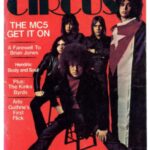 By Doug Sheppard
And then there were none. Five equals zero. The morning of May 9, 2024, the last surviving member of the MC5, drummer Dennis Thompson, died while recovering from a heart attack—
By Doug Sheppard
And then there were none. Five equals zero. The morning of May 9, 2024, the last surviving member of the MC5, drummer Dennis Thompson, died while recovering from a heart attack— -
Featured Articles
The Beatles: Their Hollywood and Los Angeles Connection
 By Harvey Kubernik
JUST RELEASED are two new installments of the Beatles’ recorded history, revised editions of two compilation albums often seen as the definitive introduction to their work.
Or
By Harvey Kubernik
JUST RELEASED are two new installments of the Beatles’ recorded history, revised editions of two compilation albums often seen as the definitive introduction to their work.
Or -
The Who: Half Speed Mastered Albums, Shel Talmy, Pete and Roger on the Monterey International Pop Festival and more
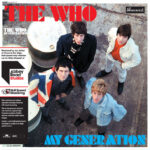
By Harvey Kubernik
Keith Moon, the drummer of the Who and I in 1975 did an interview for the now defunct Melody Maker at the Laurel Canyon home of his manager, Skip Taylor, the record producer of Canned Heat since 1967. That year I witnessed the Who’s Southern California live debut at the Hollywood Bowl.
In our ’75 conversation, Moon and I discussed the Who.
“Everybody labors under the misconception that Pete Townshend is the leader of the band. There is no leader. It’s the Who. We’re a group. Each individual is one fourth of the whole. There’s a lot of talent in our group.
“Tommy never stopped growing. When Pete was writing it, he got to a point where he was saying, ‘Where do I go from here?’ We were sitting in a boozer in London, which is most unlike us, throwing ideas around. And I said, ‘Well, what about a holiday camp?’ So, it was ‘Tommy’s Holiday Camp’. This is how the Who works. Everybody contributes, everybody is part of what we are involved in. The involvement is total, with no one person in control.”
Just issued in May from UMe is the first in a series of half speed mastered studio albums from the Who; My Generation and A Quick One. These limited-edition black vinyl versions have been mastered by long-time Who engineer Jon Astley and cut for vinyl by Miles Showell at Abbey Road Studios with a half-speed mastering technique which produces a superior vinyl cut and are packaged in original sleeves with obi strips and certificates of authenticity.
July will see the release of two more half speed mastered Who albums, The Who Sell Out and Tommy.
Regarded as one of the most important albums of all time, Tommy is a rock opera about a deaf dumb and blind boy, which, when released in 1969, reached No 2 in the UK charts and No 7 in the US. The album contains songs such as “Pinball Wizard,” “The Acid Queen” and “I’m Free” and is packaged in the original sleeve artwork.
Released in 1967, The Who Sell Out was the third album released by the band and is revered for being one of the first concept albums, celebrating the short-lived pirate radio stations of the late ‘60s with its groundbreaking use of fake adverts and jingles between songs. Highlights include “I Can See for Miles,” “Armenia City in the Sky” and “Tattoo,” and as with Tommy, it’s also been mastered by Jon Astley.
Painting Trees: Damo Suzuki on Being Content at Home
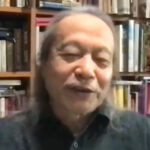
By Bill Furbee
Paintings and the outdoors have taken the place of a tour van and stages for improvisational icon Damo Suzuki. Spring is here and, today, Damo can probably be found in a nearby park, painting trees.
Damo and I first spoke in February of 2020-an interview to promote a scheduled performance at Chicago’s Empty Bottle. Shortly after, however, venues around the world shuttered their doors in response to the spread of COVID-19. With his schedule suddenly silent, Damo happily agreed to a follow-up call just a month later. Thankfully, his amiable nature was still on tap.
“I don’t have a job at the moment,” he told me, then. “It’s not possible to do anything. I canceled my US tour, I canceled my Italian tour … I don’t know what’s going to happen,” he reported from his home in Cologne, Germany.
He paused to pour himself a Kölsch beer.
“But it’s okay,” he told me. “Maybe (this is) an opportunity to make something else.” He reflected for a moment, then beamed a wide smile. “Cheers!” he said, lifting a frothy glass of beer to the camera on his computer monitor.
And now, we’ve spoken for the third time. Damo’s still at home, and in no hurry to get back on the road. Vaccine requirements and contract tracing — measures that are helping to bring the virus under control, allowing concerts to take place again — aren’t exactly conditions that Damo can get behind.
“At the moment, it’s so much difficulty traveling,” he says. “I don’t like to make a test at the airport; I don’t like to make anything that the system wants to have. Every country has its own directions-like if you eat or drink in a cafe, you sometimes have to have a vaccine passport, you must be vaccinated or you must have a test,” he says.
“For me, it’s a good time to have a break. So I treat it as my vacation, at the moment-for three years,” Damo admits, with a chuckle.
“It’s okay,” he reasons. “I’ve traveled quite a lot already before.”
Damo also has a lot of books at home-nearly 10,000, in fact. He’s eager to share titles and authors that he’s preoccupied with, while admitting, “fiction I can make with myself … my life is sometimes like fiction! Nonfiction is much more interesting at the moment.”
Meanwhile, a number of his recorded performances are still being issued. While Damo would much rather perform than release recordings, he acknowledges that many of his collaborators are interested in releasing those performances. So, he mostly leaves that decision to them.
“I’m not so particular about making an LP or album,” he stresses. “It’s not (been my job) for a long time. I just like the live concert, and not always documenting. But some people who have performed with me, they like to release it. It’s okay, they can make it. I don’t say many things. Because they also have the right to make something as documentation. So I cannot say, ‘oh it was not very good’ or anything-it’s not my task, it’s not freedom. They just ask me, (and) 99% of the time I say ‘okay.’ But, if they have something like on the front cover I wouldn’t like, if it’s demonic or satanic, or something like that, then I really don’t like to have it.”
Worth noting that Damo’s most celebrated band-psych-rock progenitors Can-has also been issuing a steady stream of reissues and rediscovered concert recordings of late. Damo, however, assures me that he’s had no communication with management or any surviving members.
“No, no (input) at all, I don’t have any contact with them,” he says. “That was already a half century before, you know? So it’s not that much things to talk about. I don’t take too much time to think about things, past.”
He adds: “I like to make music for the people who like this kind of music; I have never been interested in having a huge audience. It’s not my thing.”
Where does this leave Damo?
“I feel good!” Damo laughs, quick to point out that he now has time to exercise and observe nature. “If you’re outside, you can get vitamin D, the sun,” he says, “and it’s not been so cold this winter.”
As spring heralds in a season of new beginnings, Damo is happy to stay where he’s at for the time being.
“I like to go outside with a sketchbook,” he says, as our call wraps up. “And I like to paint trees. Spring,” he says with a beaming smile, “is always good!”
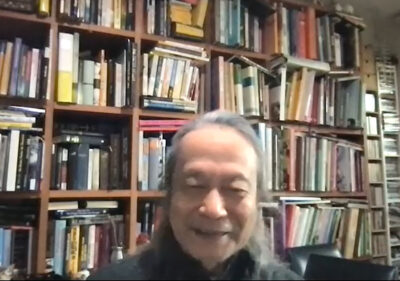
The Sounds of East LA and the Chicano Movement: Upcoming Grammy Museum In-Person Event
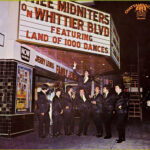
By Harvey Kubernik
On Wednesday, April 13, 2022 at 7:00 PM, the Grammy Museum in downtown Los Angeles will be presenting “The Sounds of East LA and the Chicano Movement” in conjunction with the UCLA Chicano Studies Research Center.
Musicians Mark Guerrero and Little Willie G of Thee Midniters, UCLA’s Dr. Veronica Terriquez, and moderator Dr. Melissa Hidalgo will discuss the history of the Chicano Movement as it relates to the GRAMMY Museum’s Songs of Conscience, Sounds of Freedom exhibition.
For over a half a century I have collected, touted and supported the hidden bio-regional sonic achievements birthed from East Los Angeles and the Boyle Heights area in numerous publications and examined at length in my 2014 book, Turn Up The Radio: Rock, Pop, and Roll in Los Angeles 1956-1972 as well as interviewing musician, archivist/scholar Mark Guerrero, and lead singer of Thee Midniters, Little Willie G (Garcia).
The East Los Angeles and the Boyle Heights community, east of downtown LA, has given the musical world Top 40 hitmakers, Verve Records’ founder Norman Granz, Herb Alpert, Lou Adler, HB Barnum, Mike Stoller, musician/deejay Lionel “Chico” Sesma, author Gene Aguilera, along with actor and TV producer, Jack Webb, who was an active jazz collector.
During 2022 I’ve also been working on a music documentary, both Guerrero and Garcia were among the many subjects lensed for the cinematic endeavor.